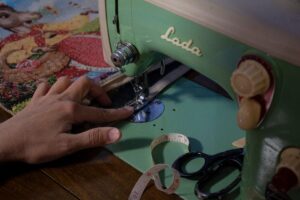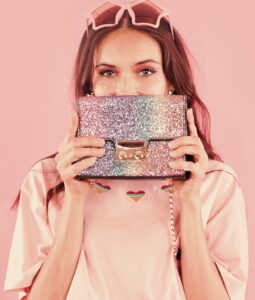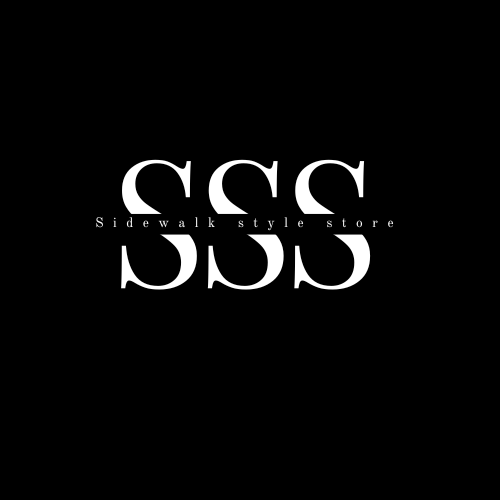How to mix match your outfits
Mixing and matching outfits is an art that allows for endless creativity and personal style expression. The key lies in understanding color palettes, textures, and silhouettes to curate cohesive yet unique looks. Start by exploring versatile wardrobe staples that can be paired with multiple pieces. Experiment with contrasts, such as combining tailored items with more relaxed or edgy pieces to create visual interest. Understanding color theory can help in harmonizing different shades or experimenting with bold contrasts. Don’t shy away from layering—mixing different lengths, patterns, and fabrics can add depth to an outfit. Accessorizing thoughtfully, whether it’s with statement jewelry, scarves, or bags, can elevate a look and tie disparate elements together. Most importantly, trust your instincts and have fun exploring different combinations; mixing and matching outfits is an opportunity for self-expression and discovering your unique fashion game language.Mixing and matching outfits is a creative process that allows you to showcase your style and personality while experimenting with different combinations. Understanding the fundamentals of color, pattern, texture, and silhouette can empower you to curate stunning ensembles that exude confidence and individuality.Start with a wardrobe assessment, understanding your clothing pieces’ color palette, styles, and versatility. Assessing your wardrobe helps identify staple pieces like neutral-colored bottoms (pants, skirts), versatile tops (blouses, shirts), and statement pieces (jackets, accessories) that form the foundation for mixing and matching.Color coordination is pivotal. Understanding the color wheel and the principles of complementary, analogous, or monochromatic schemes aids in creating visually appealing combinations. Pairing complementary colors (opposites on the wheel) like blue and orange can create a striking contrast, while analogous colors (neighboring on the wheel) like green and blue produce a harmonious blend. Monochromatic schemes using varying shades of a single color lend a sophisticated, cohesive look.
in understanding color palettes, textures, and silhouettes to curate cohesive yet unique looks. Start by exploring versatile wardrobe staples that can be paired with multiple pieces. Experiment with contrasts, such as combining tailored items with more relaxed or edgy pieces to create visual interest. Understanding color theory can help in harmonizing different shades or experimenting with bold contrasts. Don’t shy away from layering—mixing different lengths, patterns, and fabrics can add depth to an outfit. Accessorizing thoughtfully, whether it’s with statement jewelry, scarves, or bags, can elevate a look and tie disparate elements together. Most importantly, trust your instincts and have fun exploring different combinations; mixing and matching outfits is an opportunity for self-expression and discovering your unique fashion game language.Mixing and matching outfits is a creative process that allows you to showcase your style and personality while experimenting with different combinations. Understanding the fundamentals of color, pattern, texture, and silhouette can empower you to curate stunning ensembles that exude confidence and individuality.Start with a wardrobe assessment, understanding your clothing pieces’ color palette, styles, and versatility. Assessing your wardrobe helps identify staple pieces like neutral-colored bottoms (pants, skirts), versatile tops (blouses, shirts), and statement pieces (jackets, accessories) that form the foundation for mixing and matching.Color coordination is pivotal. Understanding the color wheel and the principles of complementary, analogous, or monochromatic schemes aids in creating visually appealing combinations. Pairing complementary colors (opposites on the wheel) like blue and orange can create a striking contrast, while analogous colors (neighboring on the wheel) like green and blue produce a harmonious blend. Monochromatic schemes using varying shades of a single color lend a sophisticated, cohesive look.
What is DIY Fashion

DIY fashion, short for “Do It Yourself” fashion game, is a creative and empowering approach to clothing and style that involves crafting, altering, or customizing garments and accessories. It’s a movement that encourages individuals to personalize their wardrobe by repurposing existing clothing items, embellishing pieces with unique designs, or even creating entirely new garments from scratch. This trend encompasses a wide range of techniques, from sewing and embroidery to tie-dye, patchwork, and upcycling. DIY fashion not only allows for self-expression but also promotes sustainability by reducing waste and encouraging a more conscious approach to clothing consumption. It empowers individuals to showcase their creativity, experiment with styles, and create fashion game pieces that are entirely unique and reflective of their personality and preferences.
Customize Clothes: Revamp old clothes by adding patches, embroidery, or fabric paint. Turn a plain t-shirt into a work of art.
Upcycling: Turn old clothes into something new. Transform jeans into shorts, or a shirt into a crop top. There  are tons of tutorials online to guide you.
are tons of tutorials online to guide you.
Personalized Clothing:DIY fashion involves personalizing clothing items to suit individual tastes, whether it’s adding patches, embroidery, or custom designs to existing garments.
Repurposing and Upcycling:It includes transforming old or unused clothing into something new and stylish, giving a fresh life to items that might otherwise be discarded.
Crafting and Sewing:DIY fashion game often involves sewing and crafting techniques, allowing individuals to create entirely new clothing pieces from scratch, like dresses, tops, or accessories.
Embracing Creativity:It’s a platform for creativity, encouraging experimentation with different materials, colors, and textures to produce unique and personalized fashion game items.
Sustainability and Conscious Consumption:DIY fashion promotes sustainability by advocating for the reuse of materials, reducing waste, and fostering a more conscious approach to fashion consumption.
Accessible and Empowering:It’s accessible to everyone, regardless of skill level. From simple alterations to more complex designs, DIY fashion game empowers individuals to create and express themselves through clothing.
Community and Sharing:Often, DIY fashion enthusiasts form communities where they share ideas, tutorials, and inspiration, fostering a sense of collaboration and creativity.
Expression of Individuality:Above all, DIY fashion allows for the expression of individual style and personality, enabling people to wear clothing that truly reflects who they are and what they love.
How to accessorize an outfit
Accessorizing an outfit is akin to adding the finishing touches to a masterpiece, elevating it from ordinary to exceptional. It involves the strategic placement of supplementary items—ranging from jewelry and scarves to bags, shoes, and hats—to create a harmonious and polished ensemble. These accents serve as more than mere adornments; they possess the transformative power to define style, infuse personality, and showcase individuality within an outfit. Through careful selection and placement, accessories become the threads that weave together the narrative of your attire, whether it’s accentuating a focal point, harmonizing colors, or adding a splash of contrast. They hold the dual capacity of both complementing the outfit’s aesthetic and serving functional purposes, amplifying its allure while offering practicality. The art of accessorizing transcends trends, allowing for versatility, adaptability across seasons, and an avenue for self-expression. It’s a subtle yet impactful form of sartorial storytelling that completes the fashion narrative with finesse and flair.
Here’s how accessories contribute to an outfit:

- Adding Detail: They provide intricate details that can elevate an outfit. A statement necklace, a patterned scarf, or a bold pair of shoes can become focal points, drawing attention to specific elements.
- Completing the Look: Accessories can tie an outfit together, creating cohesion. They can bridge color schemes, harmonize different garments, and create a unified ensemble.
- Versatility: Accessories offer versatility, allowing you to change the vibe of an outfit without changing the entire look. For instance, a casual outfit can be instantly elevated with the right accessories for a more formal setting.
- Functionality: Some accessories, like bags and belts, serve a functional purpose while also adding style. They can be both practical and fashionable.
- Seasonal Adaptability: Accessories offer an easy way to adapt your wardrobe to different seasons. Scarves, hats, gloves, and layers can be added or removed to suit the weather while still maintaining style.
- Personal Style Statement: Accessories are instrumental in expressing personal style. Whether it’s minimalist elegance or vibrant bohemian, they accentuate your chosen fashion identity.
- Emphasis and Focal Points: Certain accessories can serve as focal points, drawing attention to specific areas or features of an outfit. For instance, a statement necklace can highlight the neckline of a dress or top.
- Color and Texture Play: They introduce additional colors, textures, and patterns, allowing for playful combinations that enhance the overall visual appeal of an outfit.
Play with Textures and Fabrics
Playing with textures and fabrics within an outfit is akin to composing a symphony of tactile sensations, weaving together diverse materials to create a harmonious ensemble. It involves the artful juxtaposition of various textures—soft cashmere against smooth leather, crisp cotton with flowing chiffon—to craft depth and visual interest. This interplay introduces a sensory dimension, inviting touch and sight to dance together within the outfit. Incorporating different fabrics isn’t merely about aesthetics; it’s a tactile exploration that elevates the ensemble. For instance, a knit sweater paired with a satin skirt or denim juxtaposed with lace introduces contrast and depth, inviting the eye to linger on the interplay of surfaces. This fusion of textures not only adds richness but also imparts a multidimensional allure to the outfit, ensuring that every movement, every touch, unveils a new facet of its tactile symphony.
- Contrast Creation: Pairing contrasting textures like smooth silk with rough denim or plush velvet with sleek leather creates visual interest and depth in an outfit.
- Tactile Appeal: Incorporating varied textures—such as knits, chiffon, lace, or fur—adds a tactile dimension, inviting touch and enhancing the sensory experience of the outfit.
- Visual Dynamics: Mixing textures amplifies the visual impact of an ensemble, making it visually compelling and intriguing to the eye.
- Depth and Dimension: Layering different fabrics or textures adds depth to an outfit, making it more dynamic and multidimensional.
- Creating Focus Points: Textural contrasts can highlight specific areas of an outfit, drawing attention to details like a textured collar, embellished sleeves, or a patterned panel.
- Seasonal Adaptability: Playing with textures allows for seasonal adaptation. Lighter fabrics like linen or cotton in summer and heavier knits or wool in winter provide both style and comfort.
- Balancing Act: Pairing textures thoughtfully helps balance the overall look. For example, a flowy, delicate fabric can be balanced with structured pieces for a cohesive outfit.
- Elevating Basics: Adding a textured piece to a simple outfit can instantly elevate its appeal, turning a basic look into a more sophisticated ensemble.
- Expression of Style: Different textures reflect different style personalities—ranging from a casual, relaxed vibe to a more formal or eclectic aesthetic.
- Artful Experimentation: Experimenting with textures and fabrics is a creative pursuit, offering opportunities to explore and express individual style in unique ways.
- Mix Textures: Combine different fabric textures like lace, denim, silk, and leather for a tactile experience.
- Layering: Experiment with layering different types of clothes. A t-shirt under a slip dress or a shirt over a dress can create interesting looks.
The role of fashion show in fashion game
Fashion shows play a pivotal role in the fashion game, serving as dynamic platforms that set trends, showcase creativity, and influence the direction of the industry. Here are the key roles they play:
- Setting Trends: Fashion shows, especially those during Fashion Weeks in major cities like New York, Paris, Milan, and London, set the tone for upcoming trends. Designers unveil their collections, showcasing new styles, colors, silhouettes, and materials that often become influential in the fashion game world.
- Creative Expression: They are avenues for designers to express their creativity and vision. Fashion game shows allow designers to present their ideas, concepts, and artistic inspirations through clothing, often pushing the boundaries of traditional fashion game.
- Industry Networking and Exposure: Fashion shows bring together industry insiders—designers, buyers, stylists, influencers, editors, and celebrities—providing networking opportunities and exposure for emerging designers and established fashion houses.
- Media and Publicity: They attract extensive media coverage, creating buzz and publicity for brands and collections. Coverage in magazines, blogs, social media, and television further amplifies the influence of showcased designs.
- Consumer Influence: Fashion shows not only cater to industry professionals but also impact consumer behavior. They create aspirational desire, influencing what people aspire to wear and buy.
- Global Platform: Fashion shows attract an international audience, showcasing fashion’s global reach and the fusion of diverse cultures and styles.
- Brand Identity and Marketing: For fashion game brands, shows serve as a reflection of their identity and values. They are powerful marketing tools that reinforce brand image and narrative.
- Innovation and Technology: Shows often incorporate innovative technologies, from digital presentations to live streams, keeping the fashion game industry at the forefront of innovation.
- Retail and Sales: Fashion game shows contribute to the commercial aspect of the industry by driving demand for upcoming collections and influencing retail sales.
- Host a Fashion Show: Invite friends over and host a mini fashion show. Take turns showcasing your creative outfits and have fun with it.
- Photo Shoot: Set up a mini photoshoot with your favorite outfits. Experiment with different poses and locations for a playful photo session.
Fashion Game Challenges:
Capsule Wardrobe Challenge: Limit yourself to a certain number of clothing items for a week. This encourages creativity with a limited selection.
Thrifting Challenge: Visit a thrift store and challenge yourself to create a stylish outfit under a budget. Thrifting can lead to unique and unexpected finds.
Learn and Explore:
Fashion Blogs and YouTube Channels: Follow fashion bloggers and YouTubers for inspiration and tutorials. Learn new ways to style your clothes.
Fashion game sketching: If you enjoy drawing, try sketching your fashion ideas. It’s a great way to plan outfits and explore your creativity.
Stay inspired:
“Inspired fashion” often involves drawing inspiration from various sources, be it nature, art, culture, history, or even personal experiences. It’s about taking those influences and infusing them into your style in a way that reflects your personality and interests.
-
- Nature-Inspired: Draw inspiration from the colors, patterns, and textures found in nature. Earthy tones, floral prints, or even animal-inspired patterns can add a natural flair to your outfits.
- Art and Culture: Explore different art movements or cultures that resonate with you. Incorporate elements like motifs, colors, or traditional garments into modern outfits for a unique fusion.
- History and Eras: Take cues from different historical periods or fashion game eras. Whether it’s the elegance of the 1920s, the bohemian vibe of the ’70s, or the minimalism of the ’90s, reinterpret those styles with a contemporary twist.
- Personal Stories: Your own experiences and stories can inspire your fashion game choices. It could be a memorable trip, a favorite book, or a cherished memory. Use these as a starting point to create outfits that tell your story.
- Icons and Role Models: Look up to style icons or role models whose fashion game sense you admire. Use their style as inspiration and put your own spin on it to make it unique to you.
- DIY and Upcycling: Get creative by upcycling old clothes or accessories. Add patches, embroidery, or repurpose items to create something new and inspired by your imagination.
- Mood Boards and Pinterest: Create mood boards or use platforms like Pinterest to collect images that resonate with your style. It can help visualize your inspirations and guide your fashion game choices.
Dress to impress
Dress to impress” isn’t just about clothing—it’s a canvas for self-expression, a statement of confidence, and a way to captivate the world. It’s about selecting each piece intentionally, curating an ensemble that embodies your personality, and exuding an aura that commands attention. It’s the fusion of colors, textures, and styles that harmonize seamlessly, creating an unforgettable impression. Every garment becomes a brushstroke, painting the narrative of your individuality, your aspirations, and your essence. So, dress not just to impress, but to reflect the extraordinary within you.Dressing to impress is a multi-layered art that merges personal style with the demands of the environment. For formal events, a well-fitted suit exudes sophistication, while a tailored gown showcases elegance. In casual settings, a blend of comfort and chicness speaks volumes. Accessories, grooming, and attention to detail augment the overall impression. The essence lies in understanding the occasion and interpreting it through your attire, ensuring it not only mirrors your personality but also resonates with the event’s tone. Confidence serves as the cornerstone; when you feel comfortable in your skin, it radiates, leaving an indelible mark. It’s not merely about donning fashionable clothes; it’s about conveying a narrative, an identity that is uniquely yours, creating an impactful presence in any room. The interplay of colors, textures, and styles contributes to the visual symphony, complementing your demeanor. Ultimately, the goal is to strike a harmonious balance between individuality and appropriateness, crafting an ensemble that not only turns heads but also leaves a lasting memory. Dressing to impress becomes an extension of your persona, a silent language that speaks volumes before you say a word, embodying confidence, style, and poise.


 and designers to the trends that emerge from the dynamic intersection of street fashion game, runway shows, and social media. This intricate tapestry is woven with the threads of personal style, where individuals contribute their unique interpretations and attitudes toward clothing and accessories. Fashion’s global landscape, characterized by trends that traverse boundaries, is increasingly shaped by factors such as sustainability, technological advancements, and shifting consumer behaviors. Through a lens that encompasses art, culture, and commerce, the fashion game remains an endlessly fascinating canvas where creativity knows no bounds and self-expression reigns supreme.
and designers to the trends that emerge from the dynamic intersection of street fashion game, runway shows, and social media. This intricate tapestry is woven with the threads of personal style, where individuals contribute their unique interpretations and attitudes toward clothing and accessories. Fashion’s global landscape, characterized by trends that traverse boundaries, is increasingly shaped by factors such as sustainability, technological advancements, and shifting consumer behaviors. Through a lens that encompasses art, culture, and commerce, the fashion game remains an endlessly fascinating canvas where creativity knows no bounds and self-expression reigns supreme.